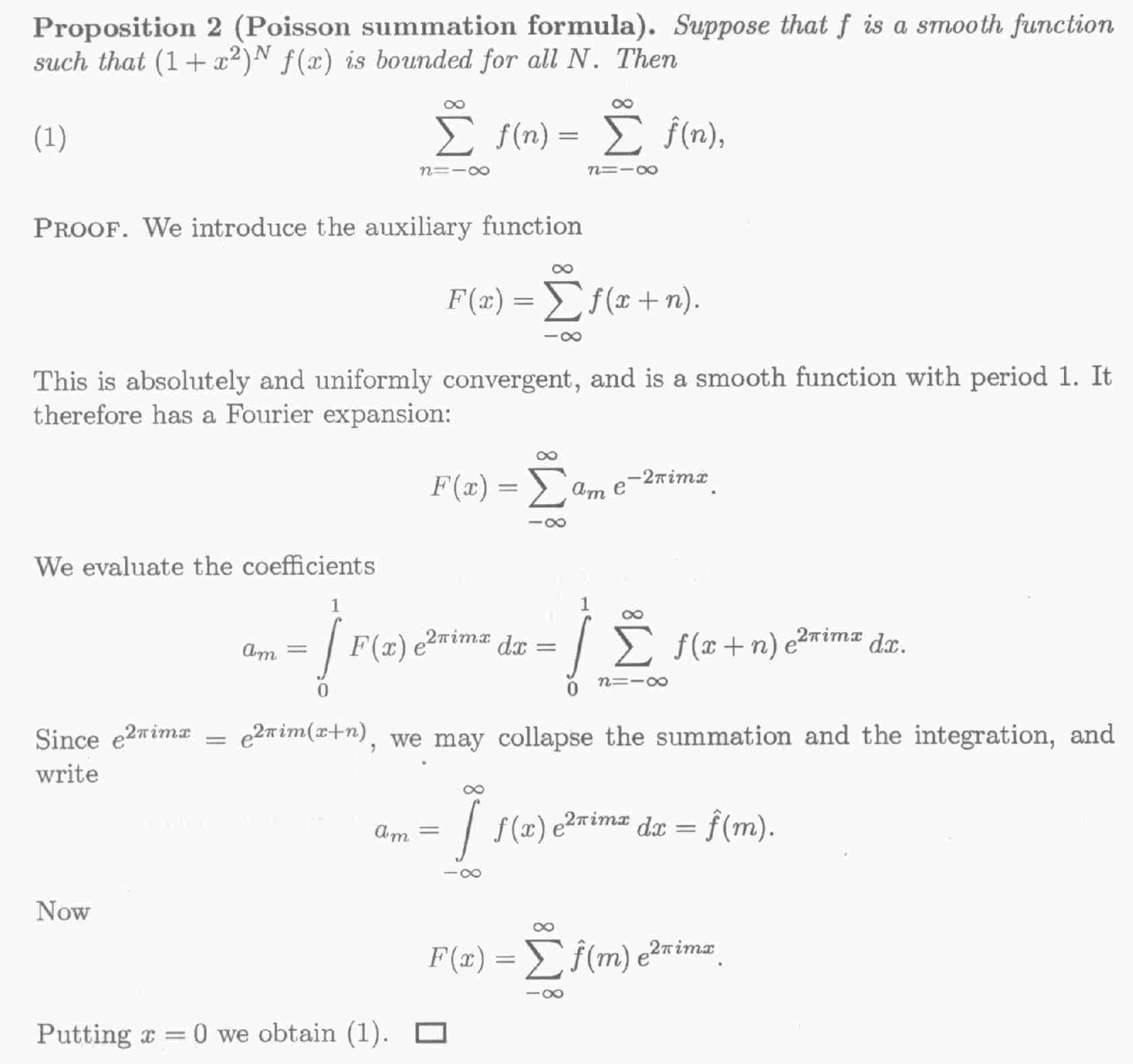D. Bump's notes on the Poisson Summation Formula


Although in the explanation above, the Poisson Summation Formula is presented as a straightforward result of Fourier analysis, it is possible to interpret it as a kind of simple "trace formula" on a torus. This is outlined in:
H.P. McKean, "Selberg's trace formula as applied to a compact Riemannian surface", Communications in Pure and Applied Mathematics 25 (1972) 225-246.
The PSF is seen in this context as relating the spectrum of the
Laplacian on a torus to the lengths of its closed geodesics. This
interpretation allows for generalisation, as the torus is a compact
Riemann surface of genus 1. A general genus n compact
Riemann surface also has a Laplacian spectrum and a set of shortest path
lengths in each deformation class, and it turns out that these sets of
values can be related according to an analogous formula, essentially
the Selberg trace formula.
archive tutorial mystery new search home contact